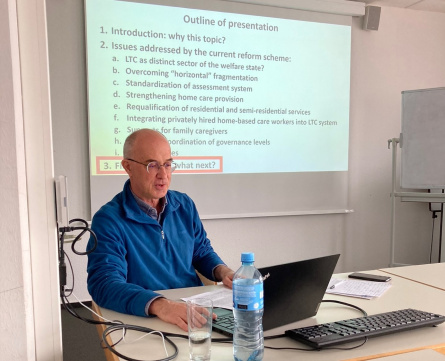
The main factors that made this much needed reform possible included the COVID-19 pandemic, post-pandemic resilience plans funded by the EU, the leadership of the previous government under Draghi, as well as the joint lobbying efforts of a large civil society coalition together with a group of long-term care experts. The coalition comprises almost 60 organisations including care providers, trade unions, employer associations, religious organisations, and the most expert academics in the field, including Lamura himself. Strongly supported by the bottom-up process initiated by this coalition, the framework law will allow for the creation of legislative decrees which in turn can implement its core elements via more detailed acts.
The elements of the framework law cover several aspects of long-term care for older people. The proposal made by the coalition to establish long-term care as a distinct sector of the welfare state was not included in the framework law, but one of the main elements of Italian long-term care will be significantly changed: The care allowance (indennità di accompagnamento) will see its first major overhaul since its creation in the 1980s. It will be replaced by a Universal Benefit which for the first time will foresee different levels of care needs. This will also require a standardisation of the assessment system, which so far had been characterised by wide regional differences in terms of practical implementation. The Universal Benefit will be granted either in the form of monetary transfers, or in-kind services. The latter could also include privately hired home-based care workers – half of which are currently employed in undeclared form – and thus facilitate regular contractual conditions. Other plans to integrate these home-based care workers (mostly female migrant workers) into the long-term care system foresee harmonised training paths and standards, as well as the reorganisation of existing contributions and tax reliefs for families who employ these care workers.
Other elements of the reform address the requalification of residential care, the horizontal fragmentation of the current system via an inter-ministerial committee, the vertical coordination of different governance levels, as well as improved support structures for family carers. Finally, the framework law also promotes active ageing and thereby follows a holistic and preventative approach to long-term care.
Whilst Dr. Lamura pointed to the difficulties on funding for the envisaged changes in long-term care – a policy field that is often subjugated to healthcare – he did underline the enormous step that was taken with this framework law. He is hopeful that the effective lobbying efforts of the civil society coalition that formed in this process will continue to positively impact the reform of long-term care for older people in the upcoming years.
To learn more about the pact for a new welfare in long-term care for older people, visit (only in Italian): https://www.pattononautosufficienza.it/.
Text: Marlene Seiffarth













